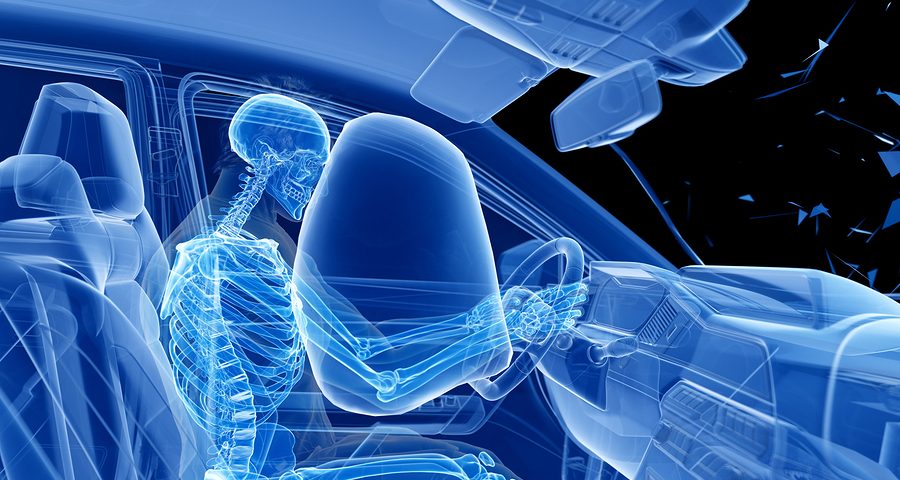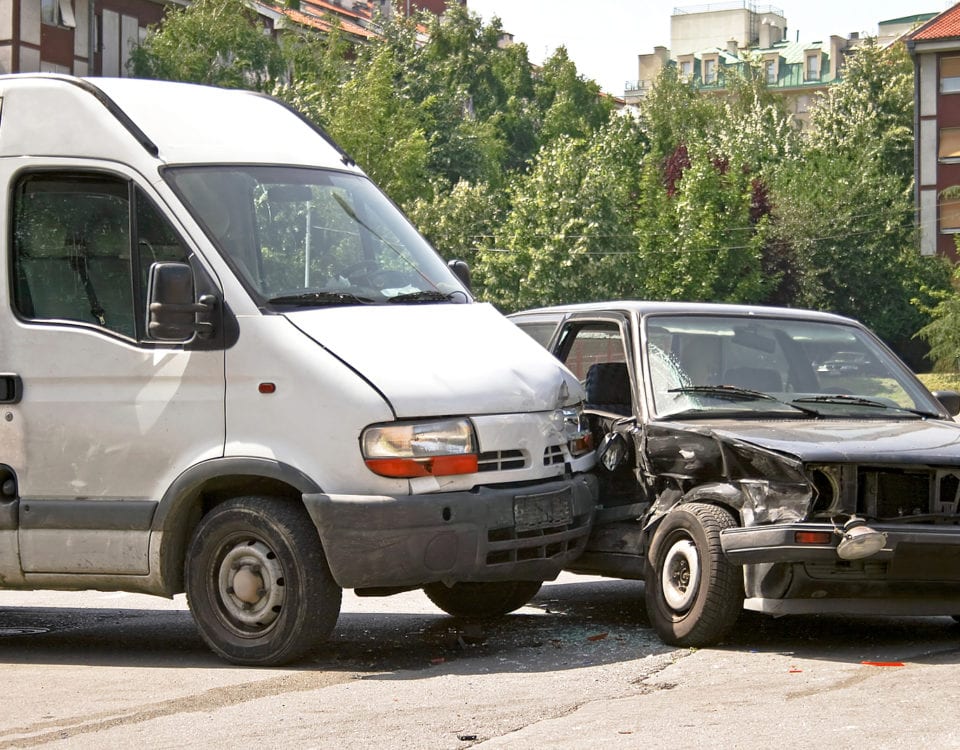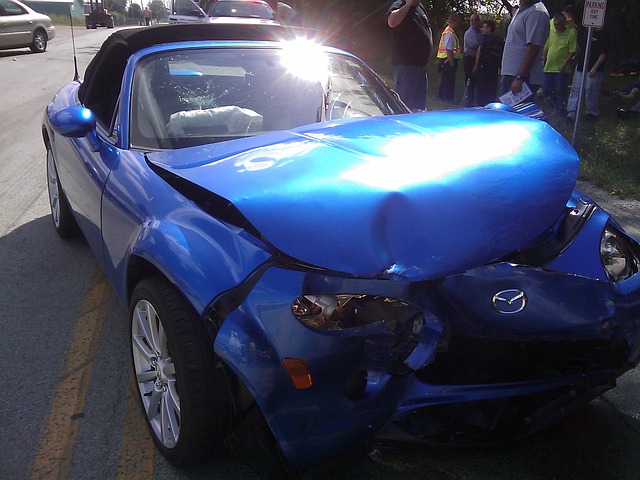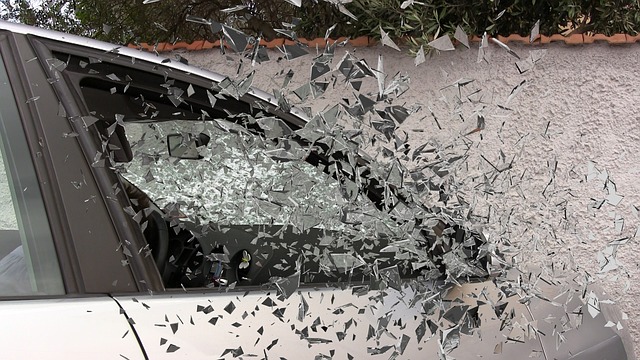A List of Vehicle Accident Injuries You May Experience
A Tradition of Excellence
 Sampling of Successful Case Resolutions
Sampling of Successful Case Resolutions
 Read our answers to some frequently asked questions.
Read our answers to some frequently asked questions.
Statement
 View Our Mission Statement
View Our Mission Statement

Pedestrian Accidents Are More Common Than You Think
April 30, 2020
Keep Your Commercial Property Safe from Premises Liability Claims
May 28, 2020Statistics from the National Highway Traffic Safety Administration (NHTSA) show that there were more than 2.7 million vehicle accident injuries and 36,000 fatalities in 2018, and we all know that traffic has picked up since then. With well over 225 million licensed drivers on the roads, of all ages and experience levels, it is not a surprise that car accidents top the list on injury causes in the United States.
Vehicle accidents are common and part of the risk of daily commuting. We compiled this list of the types Vehicle Accident Injuries You May Experience if you are involved in an accident and what can cause them.
Vehicle Accident Injuries
Every accident is different. Some of the factors that to be considered when looking at the severity of an accident are the sizes and types of vehicles involved, and the speed at impact. However, the amount of damage to the vehicle or the magnitude of the impact is often not the determining factor of injuries. The way the person is sitting in the vehicle, the physiology, age, sex, and prior medical condition of the party involved can all play a role in how badly injured the vehicle occupant ends up being. Some collisions, the car is mangled beyond recognition requiring that the jaws of life be used to remove the party involved, and yet the party involved walks away with minimal injuries. Other collisions, the vehicle visibly does not appear that damaged, but the occupant ends up with severe injuries that require surgery and other interventions. As a Personal Injury Attorney our office, the common injuries that we see from those involved in these collisions are the following:
- Whiplash: Commonly found in victims who have experienced a variety of motor vehicle collisions, are whiplash injuries to the neck and back resulting from a rapid back-and-forth movement of the head and body. The symptoms of whiplash may not appear immediately, but can include neck pain, stiffness, headaches often starting at base of neck near spine, tingling or numbness in arms, dizziness, fatigue, and even tinnitus. Back injuries also are often sustained in these accidents. When the collision occurs and the party’s body is thrown around in the vehicle back injuries often occur, especially if the party has their foot extended in a vulnerable position on the brake or gas pedal, putting great strain on their back. It is VERY important to seek out medical care after an accident, even if there are no visible injuries that day. Often when there is the rush of adrenaline and shock when the accident first happens the party feels okay, but then later after time goes by, they develop a great deal of pain and other symptoms.
- Head Injuries: Car accidents are one of the leading causes of traumatic brain injury (TBI), or a bump, blow, or jolt to the head that disrupts the normal function of the brain. Concussions are the most common forms of TBI. Symptoms of TBI can include impairments related to thinking or memory, movement, sensation (e.g., vision or hearing), or emotional functioning (e.g., personality changes, depression). A TBI or concussion often occurs even if the head does not strike anything during the collision, as the movement of the head during the collision can caused injury to the brain inside of the skull. Victims of a vehicle accident that face recovery from a TBI often experience long-term effects including impaired thinking, sensation, and movement. These issues can impact their ability to work and affect their immediate family caring for them.
- Chest Injuries: In a vehicle accident the force of the crash can result in chest injuries from impacting the steering wheel of the vehicle or halted forward movement controlled by the seatbelt. Though some of these injuries experienced can be mild, including bruising, abrasions and soreness, other injuries can be more serious. In one study that looked at causes of rib fracture in older adults, approximately 25% percent of fractures were caused by major trauma, such as a car accident. These account for the most severe injuries, where multiple ribs are fractured, and when fractured bone ends are displaced. Displaced bones can cause many life-threatening complication requiring prompt medical intervention — such as lung bruising and swelling, bleeding into or around the lungs, or a collapsed lung
- Arm and Leg Injuries: Bone crushing injuries can occur in the most violent of crashes. Foot, ankle, and wrist injuries may require surgical repair. These injuries can result from wither a head on collision or a side-impact crash. The driver often braces for impact with hands gripping the steering wheel and foot on the brake. Passengers may also receive injuries from bracing for the impact. The driver or passenger’s limbs may be thrown against the vehicle with tremendous force. Arm and leg injuries generally include scrapes, bruises, sprains, and broken bones.
Leading Causes of Car Accidents Including Injuries
The percentage of car accidents attributed to driver error was 94% in recent survey published. Decision errors such as driving too fast for conditions, too fast for the curve, false assumption of others’ actions, illegal maneuver and misjudgment of gap or others’ speed accounted for about 33 percent (±3.7%) of the crashes.
- Distracted Driving: Leading the list of causes of auto accidents, distracted driving refers to anyone or anything that results in pulling the driver’s attention away from the road. These distractions can include cell phone use and texting, adjusting GPS, attending to child , pet or passenger, or eating just to name a few.
- Drunk Driving: According to the NHTSA, drunk-driving accidents claim more than 10,000 lives in the U.S. every year. To put that into perspective that is 1 person every 50 minutes. Consumption of alcohol reduces the function of the brain, impairing thinking, reasoning and muscle coordination. All these abilities are essential to operating a vehicle safely. In a 2018 study 13% of passenger fatalities involved at least one impaired driver.
- Speeding: Statistics from the National Safety Council show that speeding was a factor in 26% of all traffic fatalities in 2018. Speeding comes in second to alcohol as the top factor in vehicular fatalities. The NHTSA reports that the force of a crash’s impact doubles with every 10 mile per hour increase in speed at speeds faster than 50 miles per hour.
- Reckless Driving: Driving a vehicle with willful or wanton disregard for the safety of persons or property. Maneuvers such as ignoring red lights and stop signs, immediate lane changes without signaling, tailgating, and aggressively cutting off others are some of the factors also associated with Aggressive Driving. Additionally, the anonymity of being in a vehicle can lead to drivers feeling less constrained in their behavior.
- Non-Performance Errors: Drowsiness or falling asleep at the wheel was the most common critical reason among non-performance errors in recent study.
Protecting Your Rights after an Accident
Car accident victims can suffer a range of injuries, from broken bones to brain injuries and spinal cord injuries. Whether the injury causes temporary or permanent disability, you may need compensation for medical bills, lost income, and pain and suffering. To recover adequate compensation, you will definitely need representation from an experienced attorney.
At Tindall Law Firm, LLC, we fight to recover damages for car accident victims in Connecticut. With 23 years of experience, attorney Tavis Tindall has the knowledge and skill to hold the negligent driver and his or her insurance company accountable for your losses. For a free consultation with a Waterbury car accident injury lawyer, please call 203.755.0018 or contact us online.
Prevention of Vehicle Accidents
Everyone must do their part to reduce the number of vehicle accidents on our roads and make them safer for all who use them. Here are some tips to remember:
- Stop, Look, Listen. Be aware of blind spots, including those in rear view mirrors and behind windshield pillars or highway road signs. Pull into traffic slowly. When approaching an intersection to make a right-hand turn, check both directions twice (at a minimum) before proceeding. Rapidly moving vehicles can appear almost out of nowhere instantly, so exercise additional caution when pulling into a busy intersection.
- Keep your hands on the steering wheel. This goes almost without saying, but sadly has to be mentioned. Don’t drive with your knee. Keep in-car distractions at a minimum. Save changing radio stations or CDs, checking cell phones, eating until vehicle is fully stopped. Having you attention on the road and your hands on the wheel will have you safely prepared for an instance when a gust of wind, pothole or a blown tire could send the vehicle into another lane and cause a serious accident.
- Watch for children and animals. Both of these have a habit of suddenly appearing from between parked cars and running unaware onto roads and possibly into traffic. If you are driving in a residential neighborhood there will be children present, be alert and slow down. In rural areas wildlife is most active at dawn and dusk making it imperative that you stay alert.
- Maintain Your Vehicle. Perform engine maintenance regularly, check and fill fluids (including window washer fluid). Keep your tires properly inflated. Make sure your indicator lights are all functioning. Inspect your vehicle from time to time prior to driving to look for any obvious defects on the tires, lights, or other parts of your vehicle.
- Scan ahead when driving. Always concentrate on the area where you will be driving in 10-12 seconds. For highway driving the safe rule is to stay back from vehicle you are behind 1 car length for every 10 miles of speed, this will position you far enough from other vehicles that if there is a change in their position or they suddenly stop or swerve that you could avoid them.
- Don’t depend on mirrors alone. Take an extra couple of seconds and look backwards when backing up or out of a parking space. Minor collisions in parking lots and garages are very common, and this will enable you to be more aware of pedestrians nearby as well.











